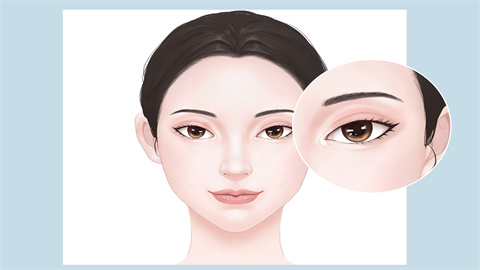How to treat scars on the corner of the eye
Generally speaking, scars refer to cicatrices. Having cicatrices at the canthus may be caused by genetic factors, natural skin healing, blepharitis, conjunctivitis, eyelid eczema, and other reasons. Treatments may include laser skin resurfacing, microdermabrasion, medication therapy, and other methods under a doctor's guidance. Detailed analysis is as follows:

1. Genetic Factors
Individual genetic differences affect skin repair mechanisms. Some people naturally tend to develop more noticeable cicatrices, which can lead to scarring at the canthus. It is recommended to understand the family tendency toward scar formation. For susceptible individuals, daily attention should be paid to protecting the skin around the canthus and minimizing the chance of injury. Laser skin resurfacing can also be performed under a doctor's guidance. This treatment uses high-energy laser beams precisely targeted at scar tissue to stimulate the regeneration and remodeling of deep dermal collagen, making the scar surface smoother and flatter. The usual reference price for laser skin resurfacing is 1,000–5,000 yuan per session. Noticeable improvement is generally seen after 1–3 months, but side effects such as redness, swelling, and blisters may occur.
2. Natural Skin Healing Process
After injury to the skin at the canthus, healing occurs through three stages—inflammatory, proliferative, and maturation. Granulation tissue forms during the proliferative phase, and poor healing during this stage may leave a scar. Unnecessary ocular trauma should be avoided in daily life, and wounds should be cleaned promptly after injury to reduce the risk of infection. Microdermabrasion can also be performed under a doctor's guidance. This treatment uses fine mineral crystals, which are sprayed at high speed to precisely exfoliate the scar surface, removing the raised and rough portions and stimulating the skin's regenerative potential to improve scar appearance. The usual reference price for microdermabrasion is 800–3,000 yuan per session. Noticeable improvement is generally seen after 2–3 weeks, but side effects such as minor bleeding and infection may occur.
3. Blepharitis
Blepharitis is caused by bacterial infection or dysfunction of the eyelid sebaceous glands. Long-term chronic inflammation can cause skin tissue damage and repair, eventually leading to scarring. Symptoms such as eyelid redness and pain may also be present. Treatment may include medications such as erythromycin eye ointment, hydrocortisone ointment, and amoxicillin capsules under a doctor's guidance.
4. Conjunctivitis
Conjunctivitis is an inflammation of the conjunctiva caused by viruses, bacteria, allergens, and other factors. Severe or recurrent conjunctivitis may involve the skin at the canthus, causing secondary scarring. Symptoms such as conjunctival congestion and edema may also occur. Patients may use medications such as acyclovir eye drops, levofloxacin eye drops, and emedastine difumarate eye drops according to medical advice.
5. Eyelid Eczema
Eyelid eczema may be related to allergic constitution and environmental irritants. When eczema recurs repeatedly, it may lead to impaired skin barrier function, poor healing, and scarring. Symptoms such as papules and vesicles may also appear. Patients may use medications such as mometasone furoate cream, tacrolimus ointment, and cetirizine tablets according to a doctor's recommendation.
Maintaining good eye hygiene, regularly cleaning the eyes, avoiding rubbing the eyes with hands, and reducing the risk of infection are important. Additionally, ensuring adequate sleep, maintaining a balanced diet, and enhancing immunity can promote healthy skin.






